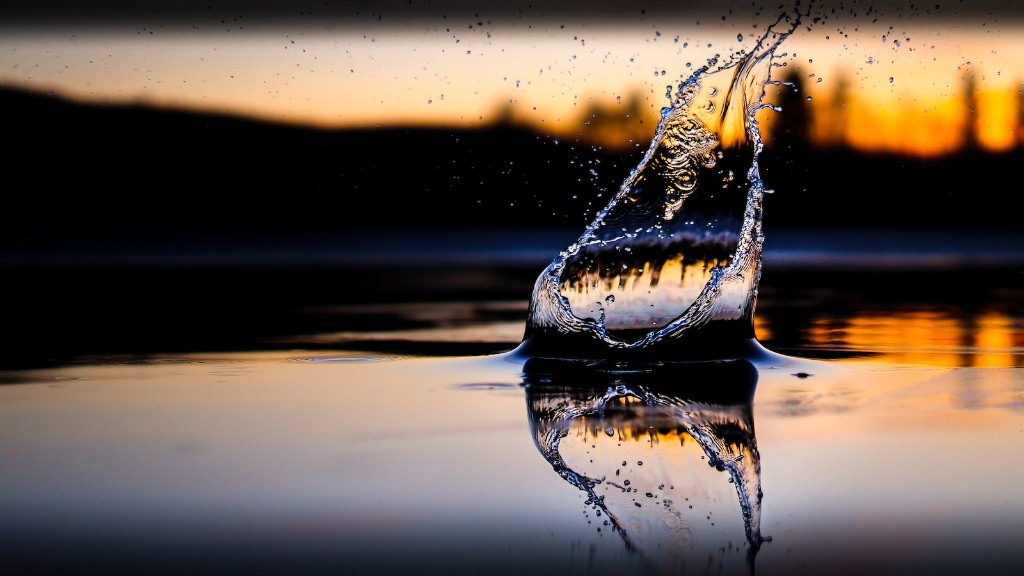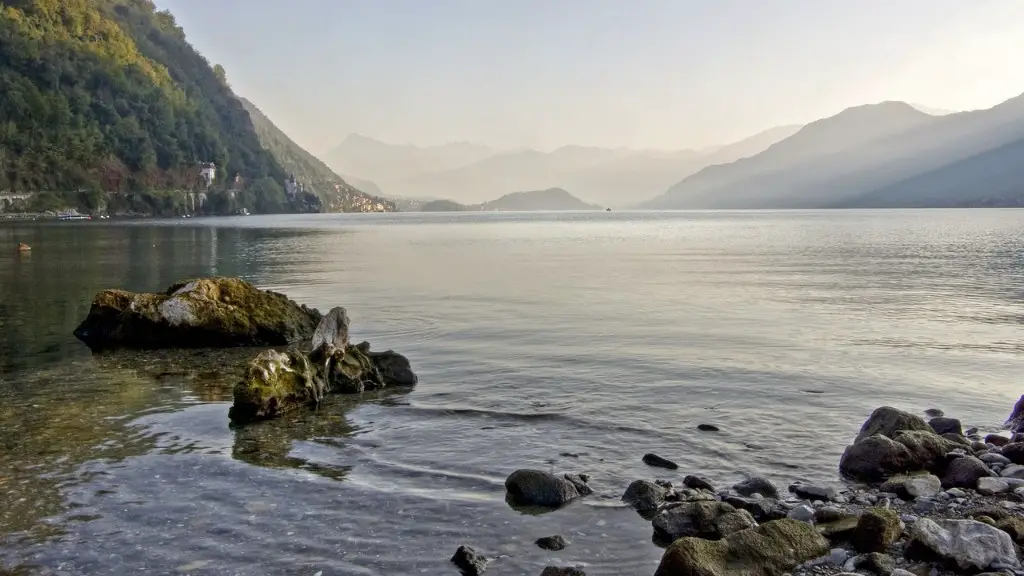Effects of Drinking Lake Superior Water
Lake Superior provides drinking water to over 6 million people in Wisconsin, Michigan, Minnesota, and Canada. But as with any water source, drinking from Lakes Superior may pose risks to health. This article will address the health concerns associated with consumption of Lake Superior water, with a specific focus on the potential harmful effects of contaminants.
Exposure to Contaminants
Contaminants in Lake Superior’s water have the potential to enter the human body through drinking. Studies have shown that contaminants, ranging from bacteria and viruses to industrial pollutants and animal waste, are present in the lake. In addition to these sources, runoff from cities and farms can also enter the lake and increase the levels of contaminants. The Michigan Department of Environmental Quality (MDEQ) recommends against swimming or drinking directly from the lake.
Effects of Consumption
Exposure to Lake Superior’s water increases the risk of developing various infections or illnesses. For example, a study published in the International Journal of Environmental Research and Public Health in 2011 found that people who drank contaminated lake water were four times more likely to develop a gastrointestinal illness than those who drank treated tap water. In addition, people who regularly swim in the lake are at risk of developing skin rashes or respiratory infections.
Environmental Impacts
Waste entering Lake Superior can have a damaging effect on the environment. Pollutants from urban runoff, agricultural activities and industrial plants can degrade the lake’s water quality. Effects include reduced biodiversity and decreased oxygen levels, which can lead to an increase in harmful algal blooms. Additionally, pollutants can directly impact humans, as contaminated water can seep into our drinking water sources.
Protection Measures
The most effective way to protect the lake from pollutants is to take preventative measures. The MDEQ emphasizes the importance of following a series of environmental protection measures, such as minimizing the use of fertilizers and pesticides, reducing fecal waste runoff, and educating the public on responsible boating practices. In addition, the MDEQ recommends treating all water taken from Lake Superior prior to drinking it, to reduce the risks of consuming contaminated water.
Water Treatment Technologies
Lake Superior’s water can be made safe for drinking by using various water treatment technologies. Commonly used methods include filtration, chlorination, and distillation. Filtration systems can remove particulate matter and some hazardous contaminants, while chlorine and other chemicals can be used to kill bacteria and other pathogens. In addition, distillation can be used to remove dissolved minerals and other contaminants from the water.
Costs & Benefits
Using water treatment technologies to make Lake Superior’s water safe for drinking comes with a number of benefits and drawbacks. The main benefit of using these technologies is the ability to purify water and make it safe for human consumption. However, the cost of these treatments can also be a significant factor. In addition, the treatment process may also result in an increased concentration of some hazardous chemicals, such as chlorine and lead.
Testing & Monitoring
Water from Lake Superior can be tested to measure its safety for drinking. The MDEQ regularly tests the lake for a wide range of contaminants, including phosphorus and E. coli. Additionally, the Environmental Protection Agency has established water quality standards for safe drinking water. These standards can be used to assess the safety of water from Lake Superior for drinking purposes.
Health Risks of Consumption
Consuming contaminated water from Lake Superior can increase the risk of developing health problems. This is due to the presence of a wide range of harmful contaminants, including bacteria, viruses, and toxic chemicals. Drinking contaminated water can cause gastrointestinal illnesses, including food poisoning and abdominal cramps. In addition, long-term exposure to contaminated water can increase the risk of developing serious illnesses, such as cancer and liver disease.
Prevention Measures
To reduce the risks of health problems associated with contaminated water, preventive measures should be taken. The MDEQ recommends avoiding drinking directly from the lake and using only safe drinking sources. Additionally, boiling water before drinking can kill most microorganisms that may be present in the water. In addition, it is important to filter and treat all water used for consumption in order to reduce the risks of consuming harmful contaminants.
Public Education
Public education is essential for maintaining water quality in Lake Superior and reducing the risk of health problems. The MDEQ recommends educating the public on the dangers of consuming contaminated water and the importance of taking preventive measures. Additionally, public awareness campaigns can be used to raise awareness on the impacts of pollution and encouraging responsible boating practices.
Pollution Control & Regulation
In order to protect the health of people who reside near Lake Superior, governments have implemented a range of pollution control measures. These include regulations on wastewater discharge and regulations on industrial processes that could be damaging to the environment. Additionally, governments have also implemented water quality standards to ensure that any water used for human consumption is safe.
Enforcement & Sanctions
Enforcement of pollution control regulations is necessary to protect Lake Superior and its surrounding waters. Governments employ methods such as inspections, random sampling and monitoring of industrial activities. Violations of water quality standards can lead to substantial fines and other sanctions. In addition, governments have implemented measures to inform the public of the potential health risks associated with consuming contaminated water from the lake.
International Cooperation
The protection of Lake Superior is also a priority for the governments of Canada, Michigan, Minnesota and Wisconsin. To this end, international agreements have been signed to provide for the regulation of industrial, agricultural and domestic activities near the lake. Additionally, a number of international organizations, such as the Great Lakes Commission, have been established to promote the protection of the lake’s water quality.
Conclusion
In conclusion, although Lake Superior provides drinking water to millions of people, drinking directly from the lake should be avoided due to the potential health risks associated with contamination. To reduce these risks, governments have implemented a range of regulations and international agreements to protect the environment and promote safe drinking water. Furthermore, water treatment technologies should be used to make the lake’s water safe for human consumption.



